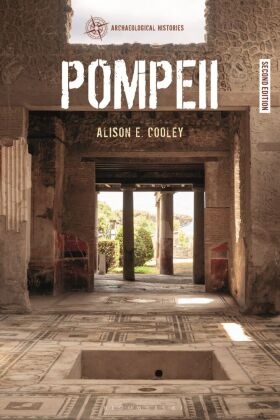
| Verlag | Bloomsbury Trade |
| Auflage | 2023 |
| Seiten | 208 |
| Format | 16,0 x 1,1 x 23,5 cm |
| Gewicht | 357 g |
| Artikeltyp | Englisches Buch |
| Reihe | Archaeological Histories |
| EAN | 9781350125216 |
| Bestell-Nr | 35012521UA |
This second edition of Alison E. Cooley's accessible introduction to Pompeii takes into account the major new theories and discoveries that have emerged since the first edition was published 20 years ago. Italy's third most popular tourist destination, Pompeii attracts millions of visitors each year, and images of the town are familiar all around the world. However, even today our picture of the site is being impacted by new archaeological discoveries. This book focuses particularly on the date of the eruption, the natural environment of Pompeii, the recovery of skeletal remains and plaster casts, and Pompeii in the popular imagination. In addition, three new chapters look at the popularization of Pompeii, archaeological reconstruction of the Roman town, and how we know what we know about the people who lived there. The technological advances of the 20th and 21st centuries have transformed our understanding of the urban environment of Pompeii, raising new questions even as they di g ever deeper into the surviving material evidence. This volume offers a succinct and insightful exploration of the impact of these scientific and archaeological innovations, as well as that of contemporary politics, upon interpretations of Pompeii over the last 250 years, including the ways in which advances in volcanology have transformed our picture of its last moments.
Inhaltsverzeichnis:
AcknowledgementsList of IllustrationsIntroduction1. The Destruction of Pompeii 2. A Broken Sleep 3. The Re-awakening 4. The Politics of Archaeology 5. The Popularization of Pompeii 6. The People of Pompeii 7. Rebuilding Pompeii NotesFurther Reading Glossary Timeline Key figures in the history of Pompeii's excavation Bibliography Index
Rezension:
Cooley's is the first comprehensive overview of the history of the Pompeii excavations, and the discussion of the casual explorations of the site that seem to have occurred prior to the official beginning in the mid-18th century presents material that few of us have ever examined. New England Classical Journal
